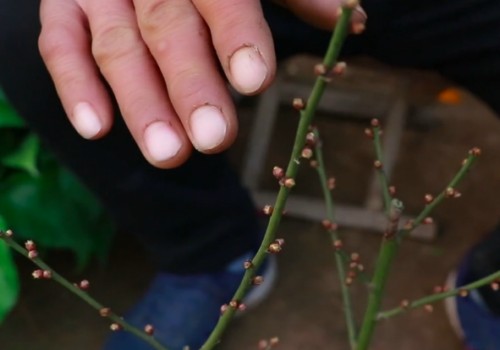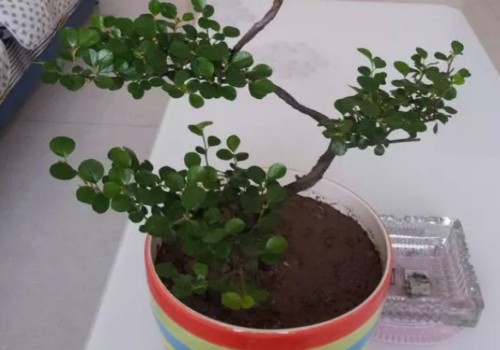How to change the soil of plum blossom bonsai
Plum blossom is a kind of ornamental flowers and plants, which is very suitable for watching flowers. After making it into a bonsai, you can also watch the type, or even the roots. And plum blossom on the requirements of potted soil is not strict, usually as long as it can meet the conditions of fertility and looseness, air permeability and water permeability, it can often survive. But after all, it is raised in the flowerpot, and the space of the flowerpot is relatively limited, so it is not only easy to harden the potted soil for a long time, but also consume about the same nutrients in the potted soil. Therefore, we need to change the soil regularly.

Changing soil for plum blossoms is a more strenuous work, but it is also a very necessary work. In particular, if the soil we use is too sticky, it is often easier to harden over time, which not only affects the ability of the root system to exchange air, but also easily causes stagnant water and rotting roots. Therefore, if we use relatively heavy soil to pot plum blossom, then the frequency of soil change is often higher. So, how to change the plum blossom bonsai?
In order to change the soil for plum blossoms, we must first determine the best time, so that the damage to the plant can be minimized. Taking it into consideration, it is generally suggested that it is most appropriate to change the soil for the plum blossom after blooming in spring. Because at this time, the plant becomes weaker after flowering and needs to resume growth and germination, and changing pots at this time will not affect the flowering of the year, so it is generally better to wait until we enjoy the flowers.
However, when changing the soil for plum blossoms, do not change the old soil at once, original and try to ensure that the root system will not be damaged, otherwise it may affect the plant basin. Of course, the editor here said not to hurt the root system of the plant, mainly not to hurt the robust root system of the plant, because this is one of the key factors to ensure the survival of the plant. We can use the new pot soil for plum blossom to replace 1 / 3 of the old soil, divided into many years, until the old pot soil is mainly replaced. In this way, the plant will not only take the pot quickly, but also will not cause a lot of root damage.
Of course, changing pots for plum blossoms also needs to be combined with root pruning. After carefully taking off the basin, you should check the status of the plum blossom root system yourself. once you find that there are rotten roots, bad roots, old and weak roots, diseased roots and other bad forms of roots, you must cut them off. Then we can use medicine to disinfect and sterilize the wound, and we can also use a little rooting agent if we want the plant to take pots and take root faster.
After that, we can change the soil and pot the plum blossoms according to the normal process. And after the completion of the basin, but also need to timely watering a permeable, in order to take the soaking method is appropriate, because this watering is often more thorough. If you water the plum blossom directly, it is often difficult to water thoroughly. Because the first watering after the pot is very critical to the survival of the plant, this watering is called "fixed root water".
Next, the plum blossom bonsai will be placed in a cool and ventilated place to slow the seedlings, during which, except for spraying water for moisturizing, it is usually not possible to water or fertilize directly. Because the plum blossom just put on the pot, its root system absorption capacity is relatively poor, after all, the plant is in a slow seedling at this time. Therefore, even if we give water and fertilizer, often the plant can not be absorbed in time, but it is easy to cause damage to its roots, thus affecting the survival of the pot.
It should be noted that plum blossoms prefer fertile and loose, permeable neutral or acidic sandy soil, so it is recommended that we use this standard to prepare new basin soil for plum blossoms. However, there are many soil allocation schemes that can meet this standard, so the editor recommends the use of edible dregs, stacked miscellaneous fertilizer soil, coal ash soil, and mixed according to the proportion of 4:4:2. If these materials are not easy to find, then the editor recommends that you use rotten leaf soil, garden soil and sand rich in organic matter and humus and mix them in the right proportion.
Time: 2019-05-27 Click:
- Prev

How to spend the winter with bonsai plum blossoms
Plum blossom usually blossoms in winter and spring, because it blossoms very fragrant and lovely, so for ordinary users, it is often more suitable for family potted cultivation. But in the eyes of bonsai masters, plum blossoms are good materials for making bonsai.
- Next

How to maintain the bonsai of Pearl Plum
Pearl plum is a sunny tree species, which has the characteristics of shade tolerance, cold tolerance, drought tolerance and moisture tolerance. Based on the characteristics of these habits, it is not difficult to imagine that this plant is very easy to feed. In addition, its leaves are feathery, strange and exquisite, and it is an evergreen shrub that can usually be planted as a potted plant.
Related
- Fuxing push coffee new agricultural production and marketing class: lack of small-scale processing plants
- Jujube rice field leisure farm deep ploughing Yilan for five years to create a space for organic food and play
- Nongyu Farm-A trial of organic papaya for brave women with advanced technology
- Four points for attention in the prevention and control of diseases and insect pests of edible fungi
- How to add nutrient solution to Edible Fungi
- Is there any good way to control edible fungus mites?
- Open Inoculation Technology of Edible Fungi
- Is there any clever way to use fertilizer for edible fungus in winter?
- What agents are used to kill the pathogens of edible fungi in the mushroom shed?
- Rapid drying of Edible Fungi

